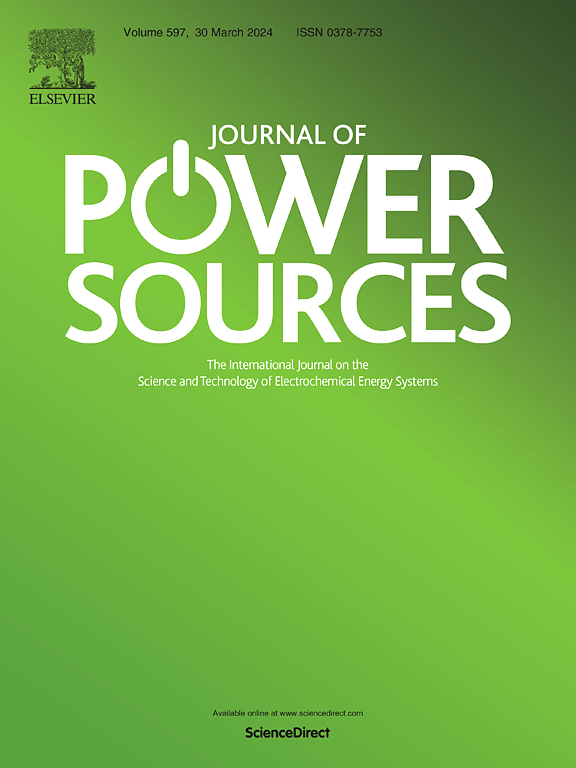Additive-assisted complex-formation-regulated decalcification of calcium disilicide for enhanced exfoliation and stable bare silicon nanosheet anodes in lithium-ion batteries
IF 8.1
2区 工程技术
Q1 CHEMISTRY, PHYSICAL
引用次数: 0
Abstract
Thin, exfoliated silicon nanosheets represent a promising approach to enhance the structural and electrochemical stability of silicon anodes in lithium-ion batteries (LIBs). Reducing nanosheet thicknesses below critical fracture thresholds minimizes cycling-induced fractures, improving material stability and cycling performance. Our preliminary work shows that deliquescent moisture in the molten salt decalcification of calcium disilicide (CaSi2) is crucial for effective exfoliation but also promotes unwanted silicon oxidation, prompting the search for alternatives. We report a thermodynamically optimized reaction route, regulated by complex formation, to enhance the molten salt decalcification and exfoliation of silicon nanosheets derived from the Zintl phase calcium disilicide. Structural analysis reveals increased specific surface area and robust interlayer separation, while electrochemical tests demonstrate significant gains in cycling performance, with a 51 % increase in reversible capacity retention and improved kinetics. This work highlights enhanced exfoliation and an optimized reaction technique as promising solutions to the limitations of bare silicon anodes, offering a scalable, high-performance pathway for lithium-ion battery technology.

求助全文
约1分钟内获得全文
求助全文
来源期刊

Journal of Power Sources
工程技术-电化学
CiteScore
16.40
自引率
6.50%
发文量
1249
审稿时长
36 days
期刊介绍:
The Journal of Power Sources is a publication catering to researchers and technologists interested in various aspects of the science, technology, and applications of electrochemical power sources. It covers original research and reviews on primary and secondary batteries, fuel cells, supercapacitors, and photo-electrochemical cells.
Topics considered include the research, development and applications of nanomaterials and novel componentry for these devices. Examples of applications of these electrochemical power sources include:
• Portable electronics
• Electric and Hybrid Electric Vehicles
• Uninterruptible Power Supply (UPS) systems
• Storage of renewable energy
• Satellites and deep space probes
• Boats and ships, drones and aircrafts
• Wearable energy storage systems
 求助内容:
求助内容: 应助结果提醒方式:
应助结果提醒方式:


